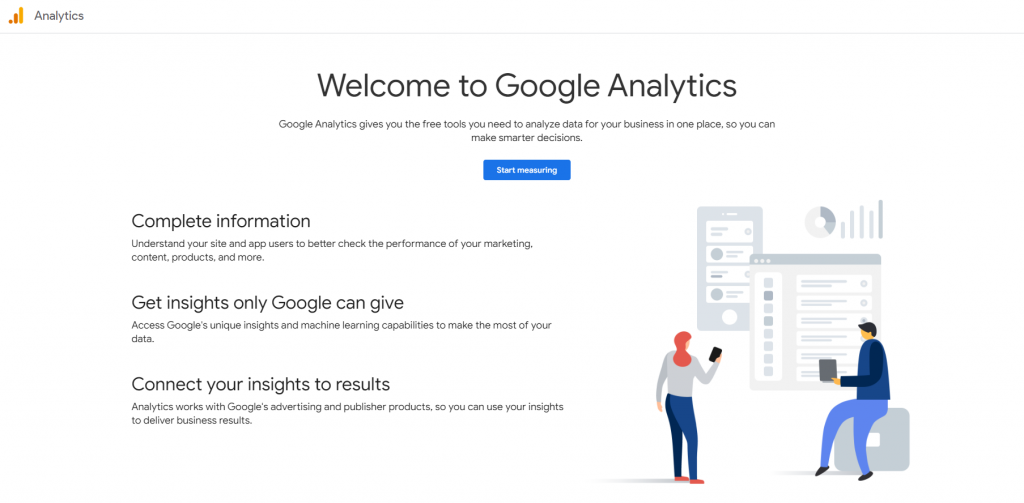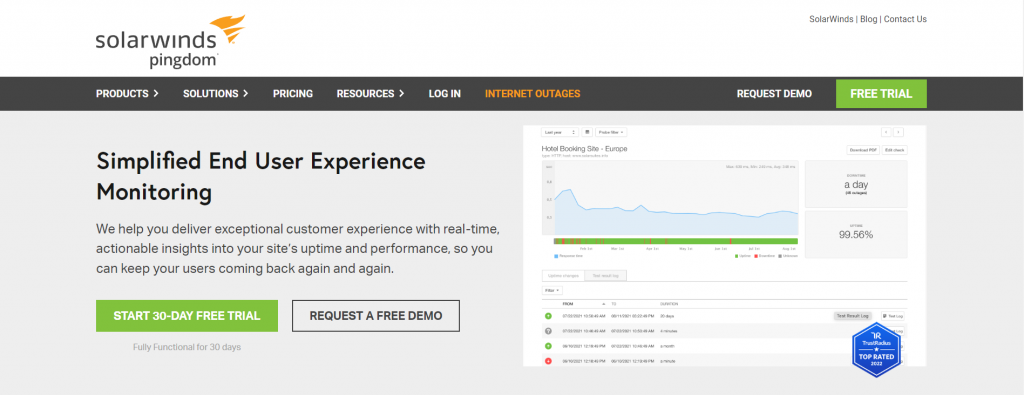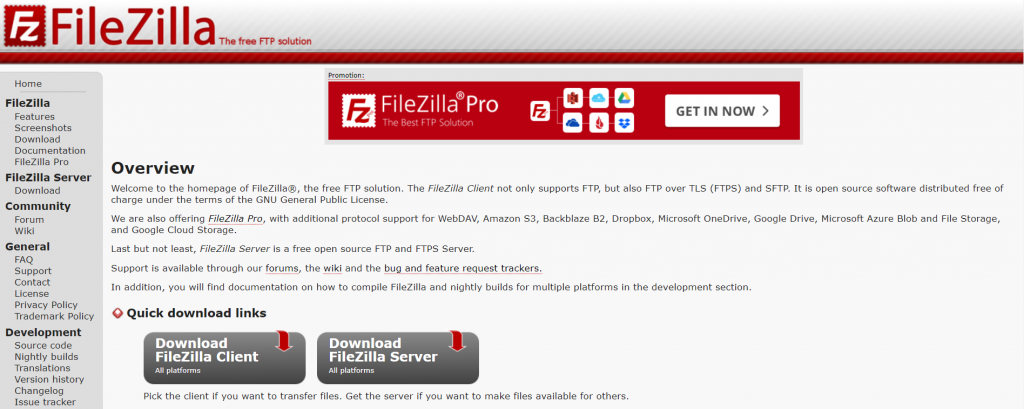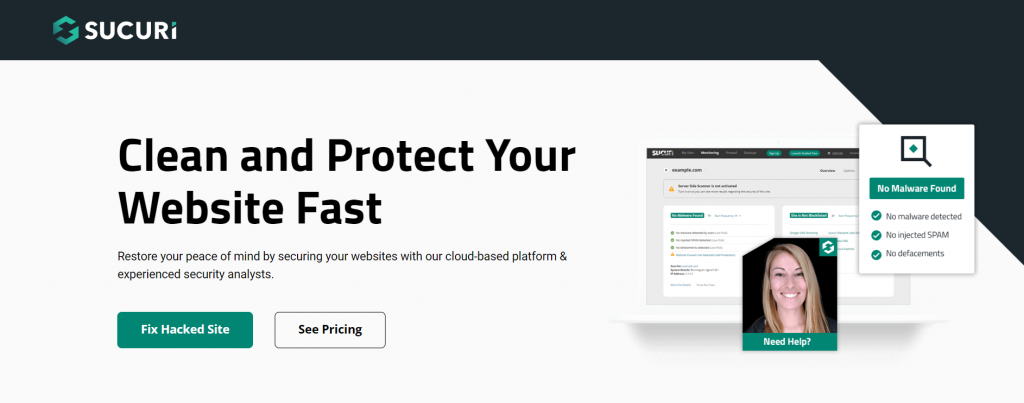Website Maintenance Plan – What It Is, What to Consider + Useful Tools
Launching the website is not the final step in building your online presence. You need a secure website with fast loading times and great user experience design to develop trust and grow your business.
To achieve that, you’ll have to perform regular maintenance. Whether you purchase maintenance services from a third-party provider or conduct them in-house, creating a website maintenance plan outlining the steps to keep your website up-to-date and optimized is a good practice.
In this article, we will cover what to include in a website maintenance plan and share the best practices and tools to help you create an effective one.

What Is a Website Maintenance Plan
A website maintenance plan is a comprehensive guide that lists actionable tasks to maintain and improve a site’s performance. This includes analyzing it for vulnerabilities, performing backups and software updates, monitoring its speed, and reporting changes.
Thus, creating a web maintenance plan usually involves developers, marketing staff, and security specialists.
Since web maintenance is an ongoing process, purchasing a website maintenance service is ideal for small businesses that don’t have a dedicated IT team.
Companies typically sell maintenance services monthly or yearly packages that cover security issues, updates, backups, and even design and SEO. They calculate the website maintenance costs depending on its complexity, size, and functionality.
If you’re doing the maintenance yourself, creating a plan will also help draw up a budget and better calculate the overall website maintenance cost.
Why Is a Website Maintenance Plan Important for Site Performance
An unmaintained site often uses outdated software, leading to slower loading times, incompatibility issues, and frequent crashes. This could make you lose customers and traffic, or worse, lead to an unusable website.
Additionally, not maintaining your site increases its vulnerability to malware injections, making the website prone to data theft.
With routine maintenance, website owners ensure all site elements are working properly and optimally. This includes maintaining plugins, themes, links, contact forms, images, payment processes, and implementing security updates.
However, carrying out each maintenance task on schedule might be challenging if you don’t have a clear outline of the process. This is where a website maintenance plan will be helpful.
Moreover, having a web maintenance plan serves as documentation for changes and updates made to the site. If the person or team responsible for maintaining the site leaves, continuing the website maintenance processes will be easier, given the available information.
What Does a Website Maintenance Plan Consist Of
The essential elements in website maintenance plans include security, updates, backups, site performance, user experience, content marketing, and SEO.
Security
Identifying vulnerabilities and implementing protective measures is necessary to reduce the risk of getting your website hacked.
Security breaches can harm a brand’s reputation and relationship with customers, damaging its online presence in the long run.
To get started, install a Secure Sockets Layer (SSL) certificate to encrypt data transfer and protect customers’ sensitive information if you haven’t done so yet.
Important! All hosting plans at Hostinger come with automatically installed free SSL certificates.
Schedule security audits every quarter to protect customers’ data and solve security gaps. A website security audit should include the following measures:
- Run security scans. Install security scanners like Sucuri and WordFence to remove malicious files and detect vulnerabilities. Hostinger users can use the Malware Scanner accessible from the hPanel dashboard.
- Mind your login credentials. Create a strong, unique password and change it at regular intervals. Use password managers like 1Password to keep all your passwords in one place and enable two-factor authentication whenever possible.
- Review CMS default settings. Manage spam comments and hide sensitive information, like your WordPress version number, to prevent malicious attacks.
- Manage user permission. As a preventative measure, limit who can access certain data. Review it every quarter and make sure to remove unused users.
Suggested Reading
Check out our guide about enhancing web application security and protect your site from cyber attacks.
Updates
Outdated website components increase the risks of incompatibility issues, system bugs, unreliable performance, and malware threats.
To avoid that, your website maintenance plan should include the following measures:
- Check for CMS updates every quarter. They typically include security patches, bug fixes, and new features.
- Update core plugins and themes monthly. Take the opportunity to remove unused ones.
- Renew your hosting plan. Also, check the available hosting resources – it might be time for an upgrade.
- Renew your domain name. Check your domain name’s active period every year. At Hostinger, domain name renewal is accessible from the Domains dashboard in hPanel.
While some software has automatic updates or notifies users when they’re due, we recommend manually checking up on a regular basis.
Additionally, it’s a good time to identify and fix server and website errors. Regular website troubleshooting helps identify and fix issues before they escalate, potentially saving on long-term maintenance expenses. It’s a cost-effective strategy to ensure your website runs smoothly.
As performing server maintenance is a technical process, we recommend entrusting the task to an IT professional. Alternatively, purchase website maintenance packages, as they usually include server updates.
However, if you use shared, cloud, or other types of managed hosting, the web host will take care of it for you.
Expert Tip
The best time to perform server maintenance is during low traffic hours.
First, fewer visitors will be affected. Second, any unforeseen issues can be resolved before business hours – minimizing the risk of losing sales.
For Hostinger users, the Access logs section in hPanel provides information on when your website experiences low traffic.
Lastly, remember to back up the site before performing any updates.
Backups
By downloading a website backup, you can prevent data loss and simply recover the site’s previous version if there’s an issue, eliminating the need to rebuild it from scratch.
Your website maintenance plan should include automatic or manual backups on a regular basis. Monthly backups are sufficient for small websites without a lot of content. However, for more complex sites with frequently updated content, like eCommerce websites, we recommend performing weekly backups.
Pro Tip
If you host the website at Hostinger, restoring backups only takes a few clicks. On your hPanel, go to Hosting -> Manage -> Files -> Backups. Then, select the backup date and click on Next Step -> Restore Files.
Site Performance
Monitoring site performance is essential to ensure your website is constantly available for visitors and has no speed issues. Here are some monthly maintenance tasks to add to your plan:
- Run a site speed test. Get insights into your current site performance using testing tools like Google’s PageSpeed Insights.
- Monitor Core Web Vitals. Check the site’s Largest Contentful Paint (LCP), Interaction to Next Paint (INP), and Cumulative Layout Shift (CLS).
- Minify files. Remove extra whitespace and unused code to reduce file size, speeding up page load time. You can do so manually or using a WordPress minify plugin like Fast Velocity Minify.
- Compress images. It’ll help reduce load times, accelerate content delivery and improve user experience.
In addition, it’s important to monitor website uptime to ensure your site is always accessible to visitors.
As it’s a continuous task, we recommend using an uptime monitoring tool like SiteUptime. It automatically checks the website every two or 30 minutes, depending on the plan you purchase.
Suggested Reading
Check out our tutorial on website optimization to further improve site performance, UX, and SEO.
User Experience
Good user experience is crucial for establishing the company’s credibility and trust with customers, as 88% of site visitors are less likely to return after a bad experience.
To avoid having a bad website design and maintain user-friendliness, here are some measures to take on a quarterly basis:
- Review the web design. In addition to being visually attractive, the site should be functional, easy to navigate, and load fast.
- Ensure web accessibility. For instance, include alt texts in all images and improve keyboard accessibility.
- Check page elements. Ensure all CTA buttons, pop-ups, and contact forms work properly.
- Make the website mobile-friendly. Start by running a mobile-friendly test and implementing its suggestions.
- Conduct usability testing. To assess user interaction with your website before making new design decisions.
Expert Tip
Before making changes to your site, test them on a staging environment. It allows you to experiment without risking the functionality of the actual website.
If you are a WordPress user, I recommend getting our Business WordPress hosting plan, as it comes with a built-in staging environment tool. You can test its code, design, and plugins and deploy them to the live site with one click.
Content Marketing
Maintenance plans should involve content updates to keep up with industry changes and maintain users engaged. Here are a few examples:
- Create new content. Create a content schedule to post at least one new article per week.
- Conduct a content audit. Analyze old posts every three to six months and identify what needs to be updated, removed, or re-written.
- Renew posts and pages monthly. Add the most up-to-date information to product pages, product descriptions, About Us pages, and so on.
- Check for broken images on a monthly basis. Replace blurry, pixelated images with better-quality ones.
SEO
Search engine optimization (SEO) is a key digital marketing tactic for a successful website. The higher it shows up on search results, the more traffic it will receive, which increases the chance of generating new leads.
Therefore, a good website maintenance plan includes consistently evaluating and improving your SEO efforts, including:
- Conduct a backlink audit every quarter. Remove harmful links and identify link-building opportunities.
- Optimize meta descriptions, tags, and titles. Ensure they fit the intended search intent and include relevant keywords.
- Evaluate site structure. Categorize pages based on similar topics, implement internal linking between relevant pages, and ensure your URLs are clean and readable.
- Update the sitemap and robots.txt file. It’ll improve crawlability and indexability for search engines.
- Remove error pages and broken links. Ensure your pages load without errors. If necessary, create redirects.
Expert Tip
After finishing the website maintenance tasks, document the changes to evaluate progress. Creating a website maintenance report helps to track how it has impacted site performance – whether it’s better speed, improved security, or higher rankings.
Helpful Tools for Website Maintenance Plans
If you decide to conduct the website maintenance services yourself, here are several website management tools to help you during the whole process.
1. Google Analytics – Web Analytics Tool

Google Analytics Stats:
- Best for: tracking website performance
- Price: freemium (starts at $150,000/year)
Google Analytics provides website reports about its visitors and their behavior. It helps you identify areas of improvement when planning the next maintenance.
For example, identify which pages visitors visit the most or which have high bounce rates. With its Traffic Source report, users can also see which channels generate the most traffic.
Moreover, the Content Drilldown report tells users the engagement metrics of specific content so they can identify which pages are underperforming.
On the Funnel Visualization report, users can see when visitors fail to complete an action-oriented goal on the site. This will help evaluate the website design and determine which improvements to add to the site maintenance plan.
While it has a very costly premium version, the free version provides a wide range of features sufficient for small to medium-sized businesses.
2. Pingdom – Site Monitoring Tool

Pingdom Stats:
- Best for: site monitoring
- Price: freemium (starts at $10/month)
To help maintain your website’s uptime and performance, having a site monitoring tool is necessary.
Pingdom is an easy-to-use tool that offers high-quality features. It includes uptime monitoring, which checks site availability from multiple locations and web browsers.
Apart from that, its real-time monitoring feature provides insights into visitor behavior, helping you identify trends.
Moreover, Pingdom offers free page speed testing to track load times and pinpoint website issues affecting user experience.
Also, if there are any issues with unavailable pages or content changes, the tool will immediately notify users via SMS, email, and in-app notifications.
[DOWNLOAD]
3. Ahrefs – SEO Tool

Ahrefs Stats:
- Best for: maintaining SEO
- Price: starts at $99/month
Ahrefs is a premium tool for maintaining the site’s SEO performance. Its site audit feature will crawl the site to find technical and on-page SEO issues and offer actionable tips to solve them.
Moreover, the backlink checker analyzes the site’s backlinks, providing insights into domain and URL ratings.
To plan future SEO efforts, users can take advantage of the Keyword Explorer. It suggests keywords to target and provides information on how difficult it would be to rank for them on organic search engine results.
Ahrefs also helps users analyze competitors by providing data about their content, backlinks, keywords, and PPC ads. With this information, users can create a strategy to outperform them.
As it’s a premium tool, purchasing a plan is necessary to get the full features. However, consider trying out Ahrefs’ free SEO tools to lower the website maintenance cost.
[DOWNLOAD]
4. FileZilla – File Management Tool

Filezilla Stats:
- Best for: managing files and performing backups
- Price: freemium (starts at $19.99/download)
FileZilla is an FTP client tool that helps users perform backups for site maintenance.
It is open-source software with an easy setup that allows users to find and transfer large files quickly and conveniently. Since it supports the SSH protocol, you can make the file transfer more secure.
Moreover, users can manage uploads and downloads with its transfer queue feature.
FileZilla is a cross-platform tool, so it’s available for Windows, Linux, and macOS. Its premium version also integrates with cloud storage services such as Google Drive, Dropbox, and Google Cloud Storage.
[DOWNLOAD]
5. Sucuri – Website Security Tool

Sucuri Stats:
- Best for: malware detection
- Price: freemium (starts at 199.99/year)
Sucuri is a maintenance tool for website security. It has scan tools for malware, blocklisting, link injection, or suspicious DNS and core file changes. Moreover, it offers unlimited malware removal requests, website clean-up, and DDoS attack protection.
If there’s an issue, it’ll immediately alert users via a number of configurable methods, including email, SMS, RSS, and Twitter.
WordPress users can install the free Sucuri Security plugin. In addition to malware scans, the plugin audits site activities, including login attempts, file uploads, and file changes – helping to prevent and mitigate threats.
In addition, Sucuri offers a free remote security scanner, Sucuri SiteCheck. Simply copy and paste your site’s URL to get a brief report of its overall security health.

Conclusion
A website maintenance plan provides site owners with a list of steps to maintain and improve their websites in terms of security, performance, content, SEO, and user experience.
Several important steps include installing an SSL certificate, optimizing digital marketing campaigns, scanning the website for malware and viruses, and ensuring it is mobile-friendly.
As website maintenance involves solving back-end issues, delegating the process to website maintenance services is a good option for those without advanced technical knowledge.
Finally, whether you’re purchasing a maintenance package or outlining a plan for a dedicated IT team, remember to track the website maintenance progress.
Website Maintenance Plan – FAQ
In this section, we’ll answer some common questions about website maintenance.
What Are Some Indicators That My Website Requires Maintenance?
Telltale signs that your website requires maintenance include slow load times, poor performance on search results, frequent errors and bugs, outdated web design, and malfunctioning plugins. It’s best to prevent these issues from happening in the first place by creating and implementing a maintenance plan.
How to Put a Website in Maintenance Mode?
The easiest way to inform visitors that your WordPress site is unavailable for scheduled maintenance is by installing a plugin like WP Maintenance Mode.
If you use Hostinger, you can also enable the Maintenance Mode via hPanel. Go to Hosting → Manage, select your WordPress dashboard and toggle on the Maintenance mode option.
How Frequently Should I Perform Website Maintenance?
It depends on the site’s complexity. The more plugins and code it has, the more frequent maintenance should be. As a general rule, we recommend conducting weekly site maintenance to ensure all site elements and resources are up-to-date.
Furthermore, prioritize security updates and regular backups. Annually, remember to renew your domain name and hosting plan.



